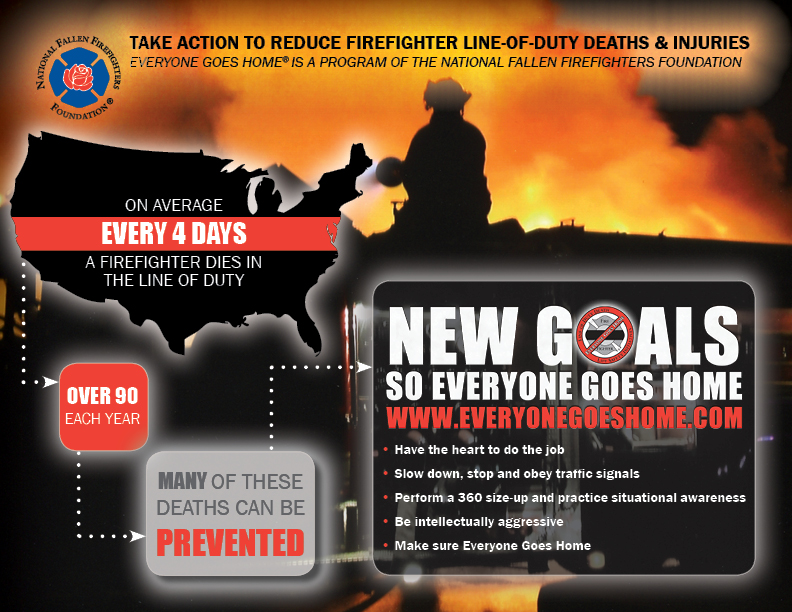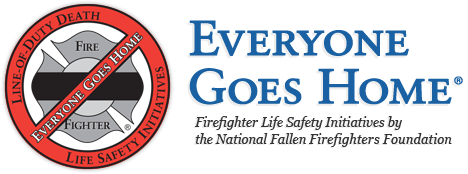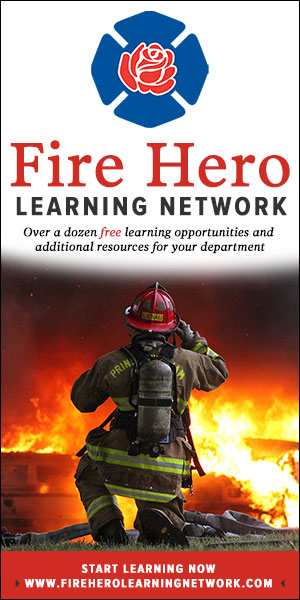From the September issue of Firehouse® Magazine
By Chief Ronald J. Siarnicki
Earlier this year, I heard about a tragedy that resulted from an off-campus party at an area college that illustrates the impact of prevention education. Many of the people who drank alcohol that night left the party by either cab or a designated driver. Why? Because they understood the risks of driving under the influence of alcohol.
Unfortunately, someone left a smoldering cigarette on the front porch at the end of the night. It didn’t take long for the porch to ignite and the smoke and flames to engulf the house. Several young adults in the house died. The house didn’t have sprinklers or working smoke alarms. Sadly, these students didn’t have a chance to get out, even if they had an escape plan.
During TAMPA2, one discussion focused on reducing fire occurrences and the impact of two interrelated Firefighter Life Safety Initiatives:
• Initiative 14—Public education must receive more resources and be championed as a critical fire and life safety program.
• Initiative 15—Advocacy must be strengthened for the enforcement of codes and the installation of home fire sprinklers.
The consensus of the group was clear: The Fire Service must do a better job of educating the public of the risks they face as a result of fire. Equally important is educating firefighters about the critical importance of prevention through intervention.
Overall, participants believed that more resources should be directed toward public education; however, the group’s opinions varied in terms of how much success the fire service has made in this area in the past 10 years.
Prevention education isn’t just installing smoke alarms with a 10-year sealed-in lithium battery or adopting and practicing escape plans. We need to better educate the fire service on strengthening code enforcement and pushing sprinkler requirements in every occupied building.
Although residential sprinkler success stories abound, many TAMPA2 participants still felt strongly that the fire service has not come far enough in achieving Initiative 15. The demand from the public for sprinklers is limited, and homebuilders associations continue to oppose change, even in communities that have seen initial success.
Furthermore, there’s the danger of boiling down the entire initiative into a residential sprinkler issue when, in fact, it’s much broader. The work environment for our firefighters encompasses every structure, from their station to where they respond. It should be unacceptable for firefighters to live in fire stations that are not up to code and to respond to structures that aren’t up to code.
Firefighters who grasp the variables and limitations of newer building designs or materials become effective advocates for residential sprinkler legislation and other codes that protect citizens and firefighters.
Advocacy is imperative, and legislative support was seen by many TAMPA2 participants as critical to success in this area. The NFFF will continue its efforts with several organizations, including the Phoenix Society, National Fire Sprinkler Association, NFPA and Common Voices, to advocate for the enforcement of fire sprinkler and other life safety codes. Individuals, fire departments and fire service organizations can also engage local and federal legislators to push for tax breaks as incentives for supporting safe buildings and updated codes. And legislators can apply pressure that the fire service cannot.
One of the most profound comments from TAMPA2 was the statement that “one day, being a code enforcement officer will be the greatest appeal to being a firefighter.” In addition to being operationally proficient at firefighting, an equal emphasis must be made to being proficient at preventing fires.
It has been said many times that the best way to prevent firefighter LODDs is to prevent the fires from occurring. To do this, the fire service needs to incorporate steps to prevention in all levels of firefighter training. Additionally, we must develop more science-based tactics for firefighting and advocate for safer building materials and construction techniques. We must also advocate for, and support, proactive legislation for fire codes and residential sprinklers in new home and multi-family construction, including incentives for homebuilders.
The NFFF looks forward to a shift in this approach. This will result in fewer fires that devastate families and communities and save the lives of firefighters.



